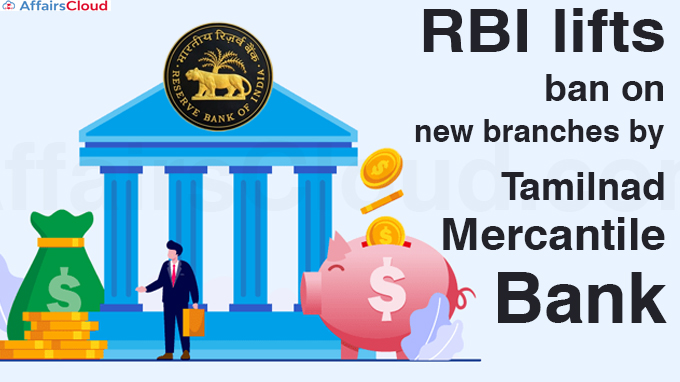
The Reserve Bank of India (RBI) has lifted the three-year ban on Thoothukudi, Tamil Nadu- based Tamilnad Mercantile Bank (TMB) on opening new branches w.e.f. October 21, 2022. following its listing in the Bombay Stock Exchange (BSE) and National Stock Exchange (NSE) on September 15, 2022.
Key Points:
i.Currently, it has 509 branches 106 rural, 247 semi-urban, 80 urban and 76 in metropolitan.
ii.The ban decision was taken in 2019 after the bank’s shareholders decided to raise authorized share capital to Rs 500 crore which was objected by the RBI for not raising its subscribed capital to at least half of the authorized capital as required.
Dhanlaxmi Bank under RBI Monitoring:
The RBI has placed Thrissur(Kerala)-based Dhanlaxmi Bank under its tight monitoring after the latter’s delay in capital raising. As per the Basel-III norms, banks are required to have a capital to risk weighted assets ratio (CRAR) of 9%.
However, Dhanlaxmi Bank’s CRAR dropped to around 13% at the end of March 2022 from 14.5% in March 2021. Also its CRAR dropped below the stipulated standards in the past and has even been placed under the Prompt Corrective Action Framework (PCA) by the RBI. So, taking all this into account, RBI placed the bank under monitoring.
What is CRAR?
It is an indicator of the ability of a bank to survive as a going business entity in case it suffers significant losses on its loan book. A bank cannot continue to operate if the total value of its assets drops below the total value of its liabilities as it would wipe out its capital (or net worth) making it insolvent.
India needs dedicated wing to release Green GDP estimates, says RBI article
RBI in its article ‘Estimation of Green GDP for India’ stated the need of dedicated wing in the Ministry of Environment, Forest and Climate Change (MoEF&CC) which will be responsible for the following:
i.Providing time-series database required for estimation of Green GDP.
ii.Release estimates of Green GDP for India periodically on a regular basis.
iii.User-friendly data dissemination platform on the lines of the OECD (Organisation for Economic Co-operation and Development) and the Eurostat.
Reason behind this wing:
The unavailability of data related to environmental indicators is posing a major challenge in research work.
Key Points:
i.The article was authored by Anupam Prakash, Kaustav K. Sarkar, and Amit Kumar.
ii.Green GDP takes into account estimates for environmental degradation, depletion of natural resources, and savings of resources and environment into the national income accounts.
iii.The views expressed in the article are those of the authors and do not represent the views of RBI.
Recent Related News:
i.On September 15, 2022, the Reserve Bank of India (RBI), decided to allow foreign inward remittances received under the Rupee Drawing Arrangement (RDA), to be transferred to the KYC (Know Your Customer) compliant bank account of the biller (beneficiary) through Bharat Bill Payment System (BBPS), subject to the conditions.
ii.RBI has removed the Central Bank of India from the Prompt Corrective Action Framework (PCAF) watchlist following its improvement in various parameters.
About Reserve Bank of India (RBI):
Governor– Shaktikanta Das
Deputy Governors– Mahesh Kumar Jain, Michael Debabrata Patra, M. Rajeshwar Rao, T. Rabi Sankar
Headquarters– Mumbai, Maharashtra
Established– 1st April 1935




